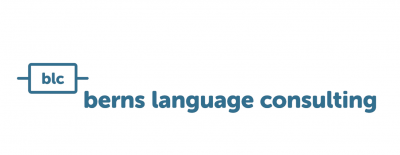Machine translation (MT) seems ingenious: fantastic translation results, available to all thanks to neural MT – fast, uncomplicated and seemingly free of charge! All good reasons why companies are rushing to embrace machine translation (MT). Now is the time to form a solid strategy on how, why and with what benefit they want to use machine translation!
Without goals, no success
In many companies these days, IT or management demand the immediate use of machine translation. Expectations are clear: Finally, all resource problems in the translation department will be solved and content will be translated quickly and, above all, cheaply. Or so they think.
Experts know that this is not always the case. Especially not, if the introduction of MT is approached without technical expertise. Great goals can indeed be achieved with the efficient use of MT. However, these goals first have to be specified and ideally be firmly embedded in the global language strategy of a company.
It’s a truism, but often forgotten: If I don’t set goals for myself, how will I know if and when I’ve achieved them?
So how does MT strategy work?
Spoiler alert: Like any other strategic work 😊: You define your goals and how to achieve them and you measure your achievements:
- Where do I want to go?
- How am I going to get there?
- When do I want to be there?
- What does my result look like?
But let’s not get ahead of ourselves: Basically, machine translation should be part of your company’s language strategy. And the results of the deployment of MT should be oriented towards the overall strategic goals of your company.
What do we mean by that? If a company has the strategic goal of broadening its international reach, i.e. conquering more markets, then the language strategy needs to take that into account: Onboarding of new languages, increase in translation volume, tight time-to-market, etc. This is where the use of MT can play a very important role strategically. The introduction of machine translation to conquer new markets is then one essential instrument to achieve this strategic goal.
Language strategy and key questions
Furthermore, it is important to ensure that machine translation can be embedded harmoniously and efficiently in a company’s global language strategy as well as in existing translation and documentation processes. So, in order to decide if and how to approach machine translation, there are key questions that can help a company to get a clearer view:
- Do I have experts in-house who can support, implement and optimize MT? Or do I need external expertise?
- Do I have enough data to train and specify my own MT engines? Or do I have to buy additional data or solely rely on the MT vendors base engines?
- Can my data be stored in the cloud? Or do I need to use an on-premise solution?
- Are my (external) translators ready for and open to post-editing? Or do I need to look for Post-Editors?
- What should my machine translation process look like? Do I have a CAT-Tool, do I need one?
- Is machine translation beneficial for my company? What does my business case look like?
Strategic work is time well spent
It is entirely possible that after answering these core questions, it will become apparent: Machine translation is not the right path to achieve your strategic goals. This may be because the text volumes in the company are too small or content is not suitable for MT. Or it may be that most content is ‘secret’ so that cloud-based solutions are out of the question but on-premise solutions too expensive.
In some cases, goals can be achieved more efficiently with a reliable LSP or the company’s own CAT-Tool and translators. But you won’t know for sure until you have dealt with these strategic questions. So, time spent on strategic work is time very well spent. This is the only way to ensure that valuable resources and energy flow into the right topics.
Last but not least
Sadly, there is no such thing as “one MT strategy” for everyone. As with all good things, there are many strategic possibilities, depending on your company in general as well as data, systems and processes at hand. To avoid getting lost in these possibilities, you need a strategy. It is your boat, which will sail you safely in the right direction.
However, the decision-making process doesn’t have to be complicated or time-consuming at all: A hands-on strategy workshop, some data analysis or the calculation of a business case can contribute to you decision-making process. And point the right strategic way!
And don’t you worry, of course we can help!






